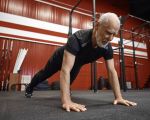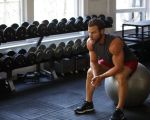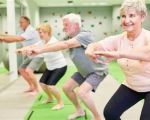- 1-Understanding-the-Importance-of-Vertical-Jump-Training
- 2-Key-Muscle-Groups-for-Vertical-Jump
- 3-Strength-Training-Exercises-to-Boost-Jump-Height
- 4-Plyometric-Workouts-for-Explosive-Power
- 5-Developing-Proper-Technique-and-Form
- 6-Tracking-Progress-and-Staying-Motivated
- 7-Real-Success-Stories-from-Athletes-and-Enthusiasts
- 8-Resources-and-Support-from-Fitness
1. Understanding the Importance of Vertical Jump Training
Improving your vertical jump height is essential for athletes in sports like basketball, volleyball, and track and field. Gym workouts focused on increasing vertical jump not only boost your athletic performance but also enhance overall lower-body strength and coordination.
Vertical jump training improves explosive power, agility, and balance, contributing to better athleticism and injury prevention. Recognizing its importance motivates consistent, focused workouts.
2. Key Muscle Groups for Vertical Jump
Effective vertical jump workouts target muscles responsible for explosive leg power. These include the quadriceps, hamstrings, glutes, calves, and core muscles.
Strengthening these areas enhances force generation during takeoff, enabling higher jumps. Gym exercises should engage these muscles synergistically for optimal results.
3. Strength Training Exercises to Boost Jump Height
Incorporate compound movements such as squats, deadlifts, lunges, and step-ups into your routine. These exercises build foundational strength in the lower body.
Focus on progressive overload, gradually increasing weights or repetitions to stimulate muscle growth and power. Proper form and controlled movements prevent injury and maximize gains.
4. Plyometric Workouts for Explosive Power
Plyometrics train your muscles to exert maximum force in short intervals, crucial for vertical jumps. Exercises like box jumps, depth jumps, jump squats, and bounding improve neuromuscular efficiency and speed.
Integrate plyometric drills after strength training sessions, allowing muscles to react explosively, translating to increased jump height.
5. Developing Proper Technique and Form
Jumping technique significantly affects vertical leap. Practice bending knees to 90 degrees, swinging arms vigorously, and maintaining body alignment for efficient energy transfer.
Video analysis and coaching can help refine your form, reducing wasted energy and improving jump mechanics.
6. Tracking Progress and Staying Motivated
Measure your vertical jump regularly to track improvements. Use tools like jump mats or apps for accurate feedback.
Setting realistic goals and celebrating milestones keeps motivation high. Consistency, combined with structured training, leads to lasting success.
7. Real Success Stories from Athletes and Enthusiasts
Many athletes credit gym workouts focusing on strength and plyometrics for substantial vertical jump improvements. For example, basketball player Marcus increased his jump by 6 inches within three months by adhering to a dedicated gym routine and proper nutrition.
Stories like Marcus’s inspire and demonstrate the effectiveness of targeted vertical jump training.
8. Resources and Support from Fitness
For tailored workout plans, professional advice, and quality equipment, visit Fitness. Their expert resources support athletes at every level in enhancing their vertical jump safely and effectively.
Explore training guides, videos, and community support to elevate your athletic performance today.








